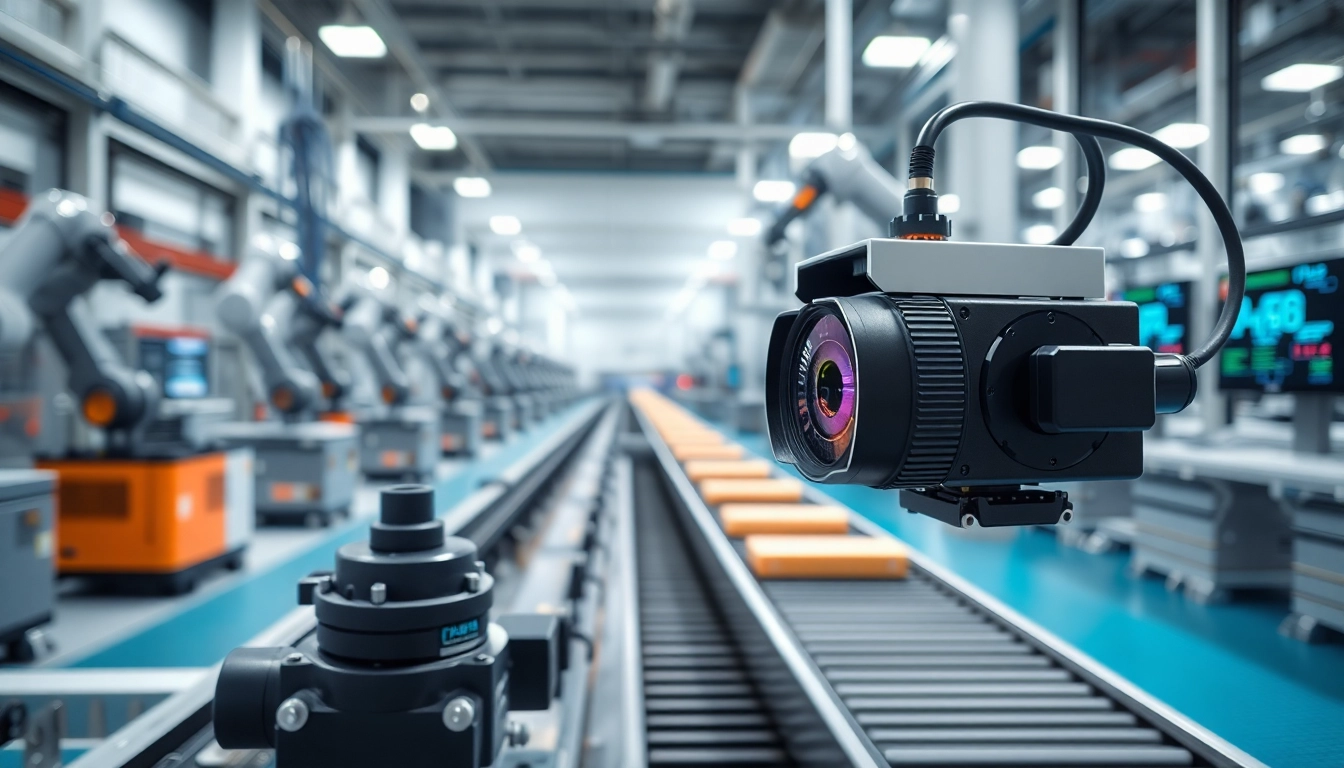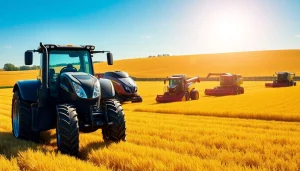Understanding Machine Vision: Key Concepts, Applications, and Benefits in Industrial Automation
1. Introduction to Machine Vision
In today’s rapidly evolving industrial landscape, machine vision has emerged as a cornerstone technology that integrates advanced imaging capabilities with automation processes. By enabling machines to interpret and make decisions based on visual data, machine vision plays a crucial role in enhancing productivity, safety, and quality across various sectors. As industries adopt more sophisticated techniques to improve operational efficiency, understanding the fundamentals and implications of machine vision becomes essential.
1.1 What is Machine Vision?
Machine vision refers to the technology and methods used to provide imaging-based automatic inspection and analysis for various applications. Unlike traditional visual inspection, which relies on human operators, machine vision utilizes optical sensors, cameras, and advanced software to observe and interpret the surrounding environment. This technology enables machines to identify defects, guide assembly processes, and manage quality control, among other tasks.
1.2 History and Evolution of Machine Vision Technology
The inception of machine vision can be traced back to the 1960s, when early systems were developed primarily for scientific and research purposes. The advent of personal computers in the 1980s paved the way for more accessible machine vision solutions, allowing for improved image processing capabilities. Progress continued into the 1990s with the rise of digital cameras and image analysis software, leading to widespread adoption within manufacturing and production environments. Today, advancements in artificial intelligence, robotics, and sensor technology further drive the evolution of machine vision, expanding its applications and enhancing its effectiveness.
1.3 Key Components of Machine Vision Systems
The architecture of a machine vision system typically includes several key components:
- Imaging Devices: These include cameras and specialized sensors that capture visual data from the operational environment.
- Lighting: Adequate and controlled lighting is critical for ensuring high-quality image acquisition. Different types of light sources, such as LED, fluorescent, and infrared, may be used based on the application.
- Processing Hardware: This refers to the computers or embedded systems that process the captured images through analysis algorithms.
- Software Algorithms: These are the intelligent systems that interpret the visual data, making decisions or sending feedback to the machinery based on predefined parameters.
2. Applications of Machine Vision Across Industries
Machine vision technology has a wide array of applications, making it indispensable in numerous industries. From manufacturing to healthcare, machine vision systems enhance efficiency, accuracy, and reliability.
2.1 Quality Control and Inspection
Quality control is one of the most prominent applications of machine vision. Vision systems can automatically inspect products for defects, ensuring they meet quality standards without the need for manual inspection. For example, in automotive manufacturing, machine vision systems are used to inspect welds, paint finishes, and component alignment, allowing for real-time quality checks that minimize the risk of defects reaching consumers.
2.2 Automation in Manufacturing
As industries transition toward automation, machine vision serves as a critical enabling technology. In assembly lines and manufacturing settings, machine vision systems guide robots during tasks such as picking, placing, and sorting components. They help ensure precise placement and reduce waste, significantly improving production rates. Companies utilizing machine vision for automated processes often experience increased productivity and reduced labor costs.
2.3 Role in Robotics and AI
Integrating machine vision with robotics and artificial intelligence enhances decision-making processes in dynamic environments. Autonomous robots equipped with machine vision can navigate complex spaces, avoid obstacles, and execute intricate tasks through visual feedback. This capability is particularly transformative in fields like agriculture, where robots equipped with vision systems can precisely harvest crops, or in logistics, where they optimize warehouse operations.
3. Machine Vision vs. Computer Vision: Understanding the Difference
While machine vision and computer vision are often used interchangeably, they serve distinct purposes and encompass different methodologies.
3.1 Defining Computer Vision
Computer vision is a broader field that focuses on enabling computers to understand and interpret visual data. It employs algorithms to extract information from images and videos, often used in applications such as facial recognition, gesture recognition, and augmented reality. Unlike machine vision, which is tailored for specific industrial applications, computer vision spans various domains, utilizing machine learning and deep learning techniques for complex data analysis.
3.2 Use Cases for Machine Vision and Computer Vision
Machine vision primarily targets industrial tasks like quality inspection and assembly guidance, providing automated solutions to repetitive tasks. In contrast, computer vision finds applications in more diverse areas, including healthcare diagnostics, autonomous driving, and social media analytics. Understanding the core differences between these two fields is essential for organizations looking to harness their respective benefits effectively.
3.3 Integration of Both Technologies
The integration of machine vision and computer vision can lead to groundbreaking advancements. For example, utilizing machine vision to capture high-quality images followed by employing computer vision algorithms for deeper analysis allows organizations to gain insights into production processes or product usage. This symbiotic relationship enhances both quality control and operational analytics.
4. Implementing a Machine Vision System
Implementing a machine vision system entails careful planning and execution to ensure optimal performance and effectiveness.
4.1 Steps to Design a Machine Vision Solution
- Define Objectives: Clearly outline the goals of the machine vision project, whether for quality inspection, automation, or data collection.
- Assess Environment: Analyze the operational environment and consider factors like lighting, space, and equipment.
- Choose Components: Select appropriate cameras, lighting, and processing hardware based on the application’s specific requirements.
- Develop Software Algorithms: Create or select powerful algorithms that can effectively process and analyze the captured images.
- Test and Validate: Conduct rigorous testing to validate the system’s performance before full deployment.
4.2 Common Challenges and Solutions
Organizations may face various challenges during implementation, including:
- Lighting Conditions: Inconsistent lighting can lead to poor image quality. Utilizing adaptable lighting solutions can mitigate this issue.
- Data Overload: Processing large amounts of visual data can overwhelm systems. Implement effective filtering and preprocessing techniques to improve data handling.
- Integration with Existing Systems: Machine vision systems must be compatible with preexisting machinery. Ensuring that systems communicate effectively is crucial for seamless operation.
4.3 Performance Metrics for Machine Vision Systems
To gauge the effectiveness of a machine vision system, specific performance metrics should be established, including:
- Accuracy: The degree to which the system correctly identifies defects or features.
- Throughput: The number of items processed per time unit, reflecting the operational efficiency of the system.
- Return on Investment (ROI): Evaluate the financial benefits of implementing the system against its costs to determine effectiveness.
5. Future Trends in Machine Vision Technology
As industries continue to evolve in the face of technological advancement, the future of machine vision looks promising.
5.1 Advancements in AI Integration
One of the most significant trends in machine vision is the increasing integration of artificial intelligence. Machine learning algorithms can enhance image processing capabilities, enabling smarter decision-making and adaptive learning from new data. These advancements will allow machine vision systems to improve over time, making them invaluable in dynamic industrial environments.
5.2 Emerging Market Opportunities
The machine vision market is projected to expand significantly, driven by demand across manufacturing, healthcare, transportation, and retail industries. As more companies seek to automate their processes and improve quality control measures, opportunities for innovation and development in the field will continue to grow.
5.3 Innovations to Watch in the Machine Vision Field
Future innovations may include enhanced 3D imaging capabilities, the advent of low-cost, high-performance cameras, and improved software algorithms capable of real-time processing. Additionally, the application of machine vision in new areas such as smart cities and autonomous vehicles holds great potential for transformation.



